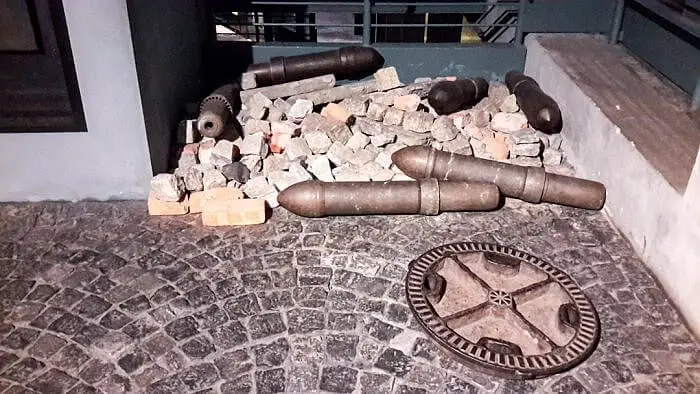Poland is a country wracked by a tragic history. Auschwitz is one of the most infamous concentration camps and a humbling experience. I didn’t think I would see anything worse, but I did. The Warsaw Uprising Museum somehow hit me even harder and deeper.
Before visiting Warsaw, I hadn’t even heard about the Warsaw Uprising, nor the resulting devastation. I was made aware of it by fellow travel writer Leah Davis, who met up with me at the museum to learn about and experience the Uprising.
What was the Warsaw Uprising?
The Warsaw Uprising started on August 1, 1944. It was a revolt by the Polish to drive the Germans out of the city. In a nutshell, when Germany invaded Poland on September 1st, 1939, Warsaw was a thriving city with over 1.3 million people. By the time the uprising began, 600,000 citizens had been killed, deported, relocated or had fled.
The uprising officially ended on October 2nd with a ceasefire signed in O?arów. On October 3rd, 64 days after the uprising began, less than 1000 citizens remained in the city and very few structures were left standing.
Exploring the Uprising Museum
There are over 40 exhibits throughout the four levels of the museum depicting the full timeline of the uprising, from life before the invasion to modern-day living with the scars of the past.
Many of the exhibits have displays of war relics, including weapons, ammunition and artillery used by both sides. Uniforms, gas masks, vehicles and communication devices fill other exhibits.
The more chilling parts of the museum are those with hundreds of photos and recreations showing the remains of the structures, although “remains” is being generous. Many parts of city were so thoroughly pulverized that hardly more than an even layer of rubble remained.
Nearly all of the 1000 remaining citizens of the city at the beginning of October were living in the sewage system of Warsaw. The museum has a recreation of a sewer pipe segment.
Miastro Ruin (City of Ruins)
The final exhibit was the most hard-hitting of all. After watching a long video from some of the survivors of the Warsaw Uprising recounting their past, you are then invited to a 3D theatrical experience. Using the few aerial photos taken of the city after the war, the museum has created a virtual tour. Using 3D glasses, you sit in chairs and “fly” around the city, similar to the Soaring Over California experience at Disneyland. While that ride leaves you feeling exhilarated, the City of Ruins video brought me to tears, and I can’t recall the memory without goosebumps and a deep sadness coming over me.
Visiting the Warsaw Uprising Museum
“The Warsaw Rising Museum was opened on the 60th anniversary of the outbreak of fighting in Warsaw. The Museum is a tribute of Warsaw’s residents to those who fought and died for independent Poland and its free capital.” – Warsaw Uprising Museum Website
- Location: Grzybowska 79, 00-844 Warszawa, Poland
- Admission: 20 Polish Zlota ($5.80), free on Sundays
- Hours: Mon, Wed, Fri 8-6; Thurs 8-8; Sat, Sun 10-6; closed Tuesday
- Audio Guides: Available in 27 languages.
- Website for booking: 1944.pl/en







Skye — and others who might be interested in the Warsaw Uprising — you may want to look for the novel Mila 18 by Leon Uris. Here’s a link where you can read more about it https://amzn.to/2qbmlxS
I read the book some years ago and still remember the impression it made. Likely time for me to read again…
The New York Times said
“Not only authentic as history . . . . It is convincing as fiction . . . . The story of a sacrifice that had real meaning and will forever be remembered . . . . A fine and important novel.”
Leon Uris book Mila 18 is dedicated to Warsaw Ghetto Uprising which took place in 1943. Whereas the museum, which author visited describes history of uprising that Polish underground army – Home Army prepared against Nazi Germany in 1944. Even tough both saw Polish citizens of all faiths rising against the same Nazi enemy, Warsaw Ghetto Uprising and Warsaw Uprising are two separate historical events which should not be confused.
Thank you for pointing this out, Natalia.